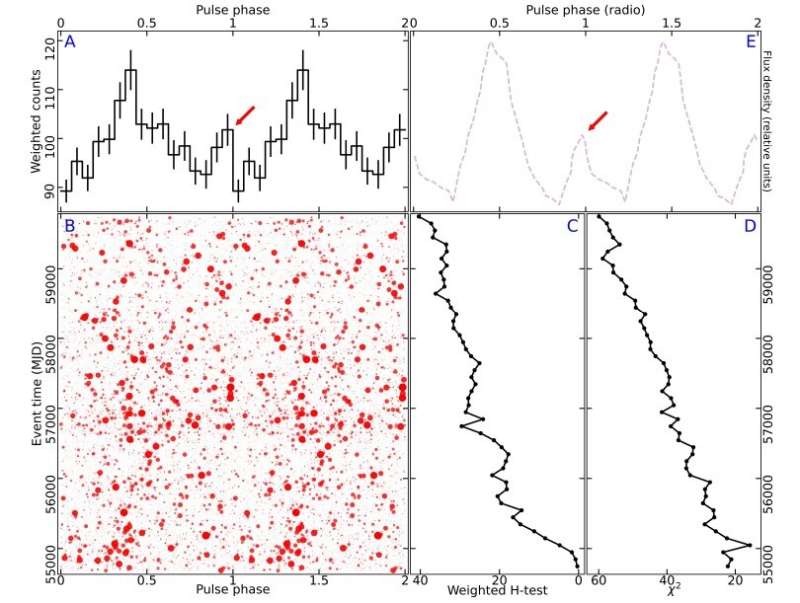July 5, 2022 report
Gamma-ray pulsations detected from pulsar PSR J1835−3259B

Using NASA's Fermi space telescope, Chinese astronomers have investigated a newly discovered millisecond pulsar known as PSR J1835−3259B. As a result, they identified gamma-ray pulsations from this source. The finding is reported in a paper published June 27 on the arXiv pre-print server.
Pulsars are highly magnetized, rotating neutron stars emitting a beam of electromagnetic radiation. The most rapidly rotating pulsars, with rotation periods below 30 milliseconds, are known as millisecond pulsars (MSPs). Astronomers assume that they are formed in binary systems when the initially more massive component turns into a neutron star that is then spun up due to accretion of matter from the secondary star.
PSR J1835−3259B is a recently discovered MSP in the globular cluster NGC 6652. It has a spin period of approximately 1.83 milliseconds and is in a nearly circular orbit of about 28.7 hours within the cluster. The distance to the pulsar is estimated to be some 32,600 light years.
Given that NGC 6652 exhibits detectable gamma-ray emission, a team of astronomers led by Pengfei Zhang of Yunnan University in Kunming, China, inspected PSR J1835−3259B, hoping to uncover such emission also from this pulsar. For this purpose, they analyzed the data from Fermi's Large Area Telescope (LAT).
"We performed timing analysis of the LAT data based on the radio ephemeris of PSR J1835-3259B (Gautam et al. 2022) to search for possible gamma-ray pulsations," the researchers wrote in the paper.
Based on the Fermi-LAT data collected for NGC 6652 for a timespan of approximately 14 years, Zhang's team managed to detect gamma-ray pulsation from PSR J1835−3259B. The results indicate a high similarity of the gamma-ray pulse profile of this MSP with the radio one.
The astronomers suppose that the observed gamma-ray emission in NGC 6652 arises mainly from PSR J1835−3259B. Given that there is no obvious offpulse phase range in the pulse profile and also the gamma-ray emission is weak, the scientists could not determine whether there is likely emission from other MSPs in NGC 6652.
Therefore, according to the authors of the paper, this would be a similar case to globular clusters NGC 6624 and NGC 6626, as in these GCs one exceptionally bright MSP contributes dominantly to the observed gamma-ray emission. The researchers noted that if this scenario is true, PSR J1835−3259B would have a gamma-ray luminosity at a level of 50 decillion erg/s and a gamma-ray efficiency of about 0.12.
"Based on different studies of the sources in the GC, the observed γ-ray emission from the GC could mainly arise from this MSP, like the previous two cases the GCs NGC 6624 and NGC 6626," the astronomers concluded.
More information: Discovery of gamma-ray pulsations of PSR J1835−3259B in the Globular Cluster NGC 6652, arXiv:2206.13667 [astro-ph.HE] arxiv.org/abs/2206.13667
© 2022 Science X Network




















